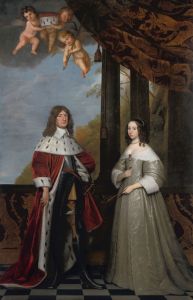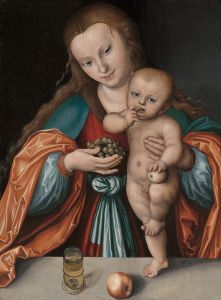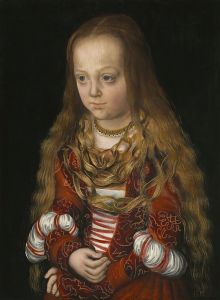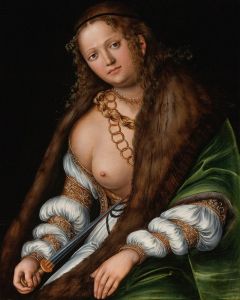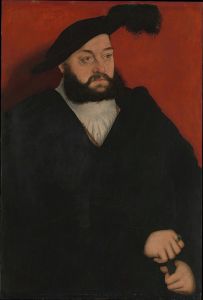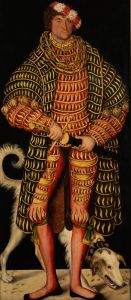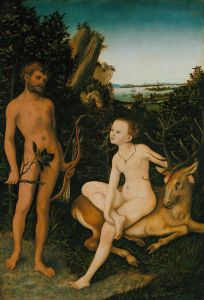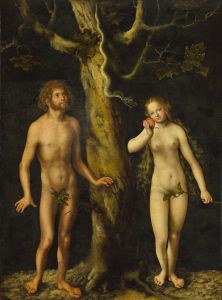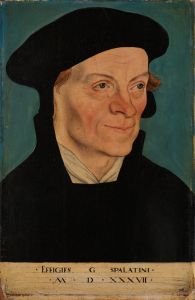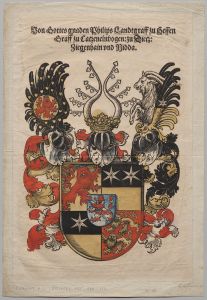
Coat of Arms of John Frederic, Elector of Saxony, called the Magnanimous
A hand-painted replica of Lucas Cranach the Elder’s masterpiece Coat of Arms of John Frederic, Elector of Saxony, called the Magnanimous, meticulously crafted by professional artists to capture the true essence of the original. Each piece is created with museum-quality canvas and rare mineral pigments, carefully painted by experienced artists with delicate brushstrokes and rich, layered colors to perfectly recreate the texture of the original artwork. Unlike machine-printed reproductions, this hand-painted version brings the painting to life, infused with the artist’s emotions and skill in every stroke. Whether for personal collection or home decoration, it instantly elevates the artistic atmosphere of any space.
The "Coat of Arms of John Frederic, Elector of Saxony, called the Magnanimous" is a notable artwork created by Lucas Cranach the Elder, a prominent German Renaissance painter and printmaker. This piece is a heraldic representation of John Frederic I, who was the Elector of Saxony from 1532 to 1547. John Frederic, also known as "the Magnanimous," played a significant role in the political and religious upheavals of his time, particularly during the Protestant Reformation.
Lucas Cranach the Elder was a close associate of Martin Luther and a key figure in the Reformation. His works often included portraits of Reformation leaders and supporters, as well as religious themes that aligned with Protestant ideals. Cranach's relationship with the Saxon court, particularly with John Frederic, was instrumental in his career, providing him with numerous commissions and a stable patronage.
The coat of arms depicted in this artwork is a detailed and symbolic representation of John Frederic's status and heritage. Heraldry was an important aspect of noble identity during the Renaissance, serving both as a means of identification and a display of lineage and alliances. The coat of arms would typically include various elements such as shields, crests, supporters, and mottos, each with specific meanings and historical significance.
In this particular coat of arms, the central shield is divided into several sections, each representing different territories and familial connections. The imagery includes lions, eagles, and other heraldic animals, which are common symbols of strength, courage, and nobility. The use of colors such as gold, black, and red also carries specific heraldic meanings, often associated with wealth, power, and valor.
Cranach's artistic style is evident in the meticulous detail and vibrant colors of the coat of arms. His ability to combine realism with symbolic representation made his heraldic works both visually appealing and rich in meaning. The precision in the depiction of the various elements reflects Cranach's skill and his understanding of heraldic conventions.
John Frederic's coat of arms not only served as a personal emblem but also as a political statement. During his tenure as Elector of Saxony, he was a staunch supporter of the Protestant Reformation and a key figure in the Schmalkaldic League, an alliance of Protestant territories. His commitment to the Reformation and his resistance against the Holy Roman Emperor Charles V ultimately led to his capture and imprisonment after the Battle of Mühlberg in 1547. Despite his defeat, John Frederic remained a respected and influential figure in the history of the Reformation.
The "Coat of Arms of John Frederic, Elector of Saxony, called the Magnanimous" by Lucas Cranach the Elder is thus not only an artistic masterpiece but also a historical document that encapsulates the identity, values, and political stance of one of the key figures of the Protestant Reformation. Through this work, Cranach has immortalized John Frederic's legacy, providing a visual narrative of his noble heritage and his significant role in the religious and political transformations of his time.







